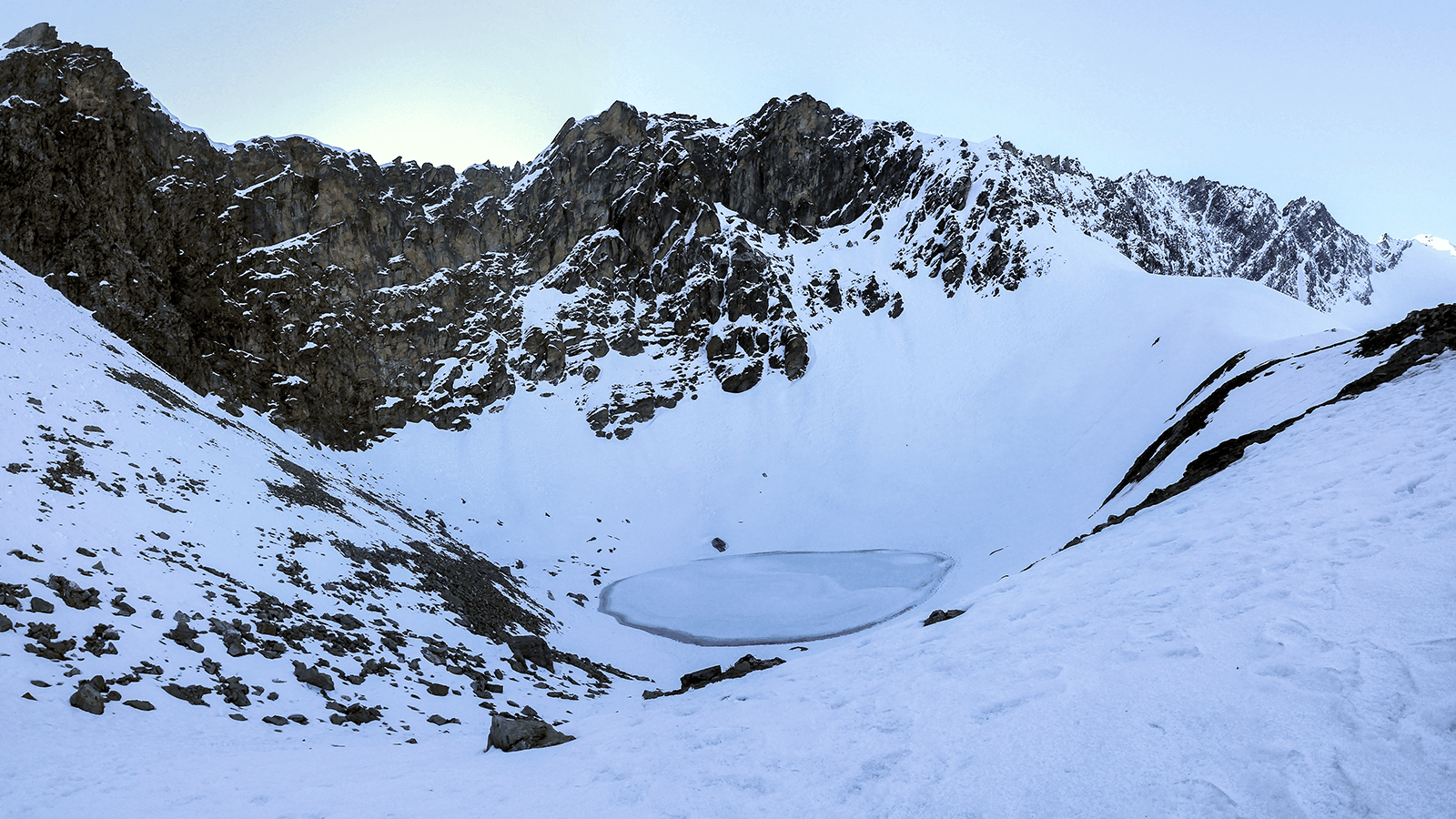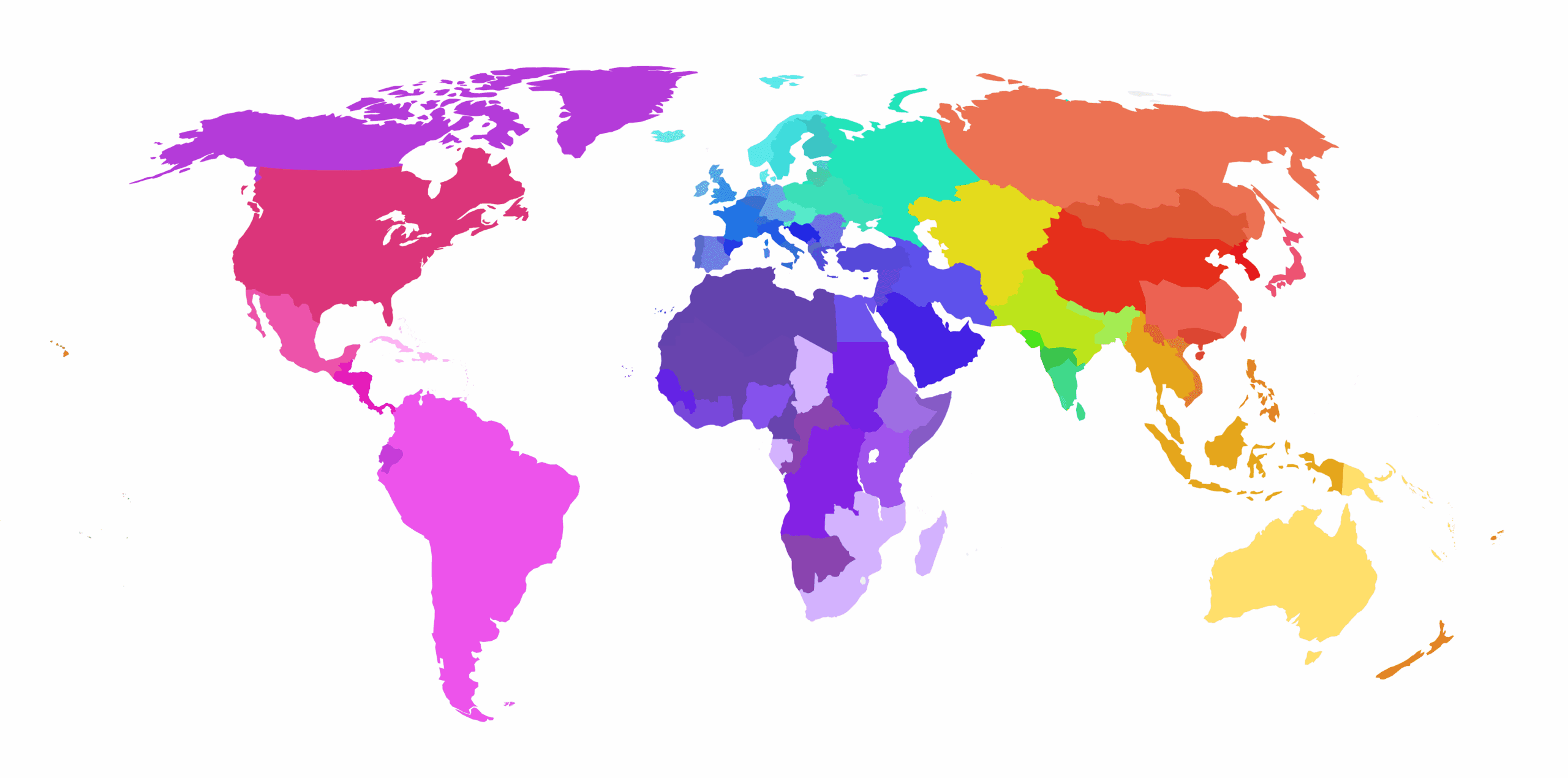Every year on the third Saturday in October, the world celebrates International Archaeology Day, recognizing the important contributions archaeological research makes to society. This year, to celebrate, we’re spotlighting one of our favorite archaeological mysteries in the Historical MatchesSM feature—the skeletons of Roopkund Lake.
About Roopkund Lake
Roopkund Lake is a small glacial lake located over 5,000 meters (over 16,000 ft) above sea level in the Nanda Devi National Park, in the Indian Himalayas. In 1942, a forest ranger patrolling the park stumbled upon a chilling scene: hundreds of skeletal remains strewn around the lake. The site has captivated researchers and locals alike ever since.
The mystery of who these individuals were, how they died, and why they were in such a remote and inhospitable location has sparked decades of speculation. Some early researchers proposed that the remains belonged to an army that had lost its way in the mountains, while others suggested they might have been traders following a trans-Himalayan route that had since vanished. A few archaeologists posited that they were pilgrims traveling to nearby shrines, possibly part of the ancient Nanda Devi Raj Jat, a religious procession spanning ~290 kilometers (~180 miles) that is still undertaken in the region every 12 years.
The identification of women and children among the dead, however, made some of the proposed explanations less plausible–especially the claim that they may have been members of an army. Without weapons, trade goods, or written records, no single theory could fully account for the diversity and composition of the group. Local folklore offered its own interpretation: a king, his family, and attendants on a pilgrimage to honor the mountain goddess Nanda Devi had violated sacred protocol and were struck down by a deadly hailstorm in divine retribution.
An exciting 23andMe connection
In 2019, scientists sequenced the genomes of 38 individuals from Roopkund Lake in an effort to better understand the origins of the mysterious remains. But instead of resolving this longstanding mystery, their findings uncovered an even more complex puzzle.
So what makes this story one of 23andMe’s favorite archaeological mysteries? That 2019 research study was actually led by our very own Dr. Éadaoin Harney—a Scientist on the Population Genetics R&D Team and 23andMe’s “resident ancient DNA expert.” She worked on this study during her PhD at Harvard University where she was a member of Prof. David Reich’s ancient DNA laboratories–one of the largest ancient DNA research laboratories in the world.
“When I first started working with the Roopkund ancient DNA data, I thought that genetics would be a simple and straightforward way to finally help solve the mystery of who they were,” said Dr. Harney. But she was in for a big surprise! “The first hint that this wasn’t going to be as simple as I initially thought was when we discovered how ancestrally diverse the Roopkund individuals were. Then we learned that they didn’t all die at the same time, as had previously been believed. Instead radiocarbon dates generated from the bones spanned over 1,000 years.”
How DNA adds to the mystery
The 2019 genetic analysis showed that the individuals fell into three distinct genetic groups, with ancestries from across the globe.
The largest group (which we’ll refer to as Roopkund A) consisted of 23 individuals who died between the 7th and 10th centuries CE, likely during multiple distinct events. Genetically, all appeared South Asian, but with remarkably diverse ancestries–each individual appeared most closely related to different present-day South Asian populations. This finding suggests that they may have traveled to the lake from multiple locations across the subcontinent. Although the exact purpose of their journey to Roopkund Lake remains uncertain, some researchers speculate that they may have been early participants in the Nanda Devi Raj Jat, a traditional pilgrimage that still passes by the lake every 12 years.
The other two groups were even more surprising. One group (Roopkund B) consisted of 14 individuals whose DNA connected them to present-day populations from the eastern Mediterranean—particularly populations in Greece and neighboring regions. The third group (Roopkund C) was represented by a single individual with genetic ancestry most similar to Southeast Asian populations. Radiocarbon dating revealed that these individuals likely died in a single event some time between the 17th and 20th centuries. Why people with ancestry from such distant regions were traveling together in one of the most remote parts of the Himalayas remains a mystery to this day.
Dr. Harney joined 23andMe in 2020 with the goal of creating an approach to identify direct genetic connections between historical and living people. She and her colleagues on the Population Genetics R&D Team succeeded! This technology was first described in their 2023 study of African Americans from Catoctin Furnace, which was published in (and featured on the cover of) Science. She then helped spearhead the creation of the 23andMe Historical Matches feature, enabling customers to learn how they connect to different historical and ancient individuals.
Over the last five years, one of her secret ambitions was to use this technology to try and finally solve the mystery of the Roopkund individuals’ identities. Could identifying any close genetic relatives of the Roopkund individuals in the 23andMe genetic database help us learn about their identities and answer what brought them to Roopkund?
Did we solve the mystery?
We compared the Roopkund individuals to over 11 million research consenting participants in the 23andMe genetic database. While we were hoping this analysis would reveal a number of close genetic relatives, unfortunately, the mystery of Roopkund Lake lives on.
We found that only about 1,240 research participants—less than 0.011% of the individuals included in our analysis—share any sort of genetic connection to the Roopkund individuals. And of those participants, we can count the number of individuals who share over 30 cM of DNA (what we label a “significant genetic connection” in the Historical Matches feature) on just one hand. In fact, we found so few “significant relatives” that the chances any of those connections trace back to a recent shared common ancestor on a genealogical family tree are extremely slim.
(Although if you happen to be one of those lucky individuals who sees a “significant connection” listed to one of the Roopkund individuals in your 23andMe report, please reach out to us, as we’d love to learn more!)
What else did we discover?
So, we didn’t solve the mystery of who the Roopkund individuals were, but we did gather fascinating data about their connections to the present day.
First, here is a breakdown of the 17 Roopkund individuals whose DNA was well preserved enough to include in our analyses:
- 8 from Roopkund A (South Asian ancestry)
- 8 from Roopkund B (Eastern Mediterranean ancestry)
- 1 from Roopkund C (Southeast Asian ancestry)
As we mentioned, about 1,240 23andMe research participants shared a genetic connection to the Roopkund individuals. The figure below shows the number of matches each Roopkund group received and highlights the amount of DNA shared. As you can see, the vast majority of the connections we discovered involve less than 20 cM of DNA, meaning that they likely trace back to a shared common ancestor who lived long before any of the Roopkund individuals.

Of those who share a genetic connection, the majority (~1,160) shared a connection to one or more individuals in the Roopkund B group—the one with Eastern Mediterranean-related ancestry. This didn’t surprise us, since the majority of 23andMe research participants have European ancestry, making them more likely to be related to the Roopkund B individuals.
In addition to occurring more frequently, the Roopkund B individuals also shared some of the strongest genetic connections to 23andMe research participants, as shown in the figure below which depicts the maximum amount of DNA that each Roopkund individual shared with a research participant.

We decided to see what Genetic Groups the Roopkund individuals could be connected to, using the same approach that we use to connect customers to these Genetic Groups.
Many of the Roopkund B individuals received matches to Genetic Groups in south eastern Europe, with the strongest connections to groups in Greece and Crete–exactly mirroring the findings of the original study!

Since the Roopkund A and Roopkund C individuals shared far fewer genetic connections to 23andMe research participants, it was hard to localize their ancestry in the same way. But we were able to connect the Roopkund C individual to a single Genetic Group, located in China. This finding is generally consistent with the original study, where this individual exhibited connections to populations in East and Southeast Asia.

We couldn’t connect the Roopkund A individuals to any of the Genetic Groups that we have identified. That doesn’t mean they aren’t genetically related to any of these groups. Instead it is likely just because the original research team was only able to sequence a small amount of DNA from these individuals, making it harder to connect them to research participants in the 23andMe database.
What’s Next?
So for now, all we can say is that the mystery of Roopkund Lake continues. But we promise this archaeological site is one that is close to our hearts. If we have any updates in the future, we’ll be sure to let you know.
Learn more
Want to see if you share a genetic connection with any of the individuals who died at Roopkund Lake—or hundreds of other historical people? The Historical Matches feature is available to 23andMe+ Premium™ members.
And if you are interested in finding ways to celebrate International Archaeology Day, check out organizations like the Archaeological Institute of America, which has an exciting calendar of Archaeology-related events.



